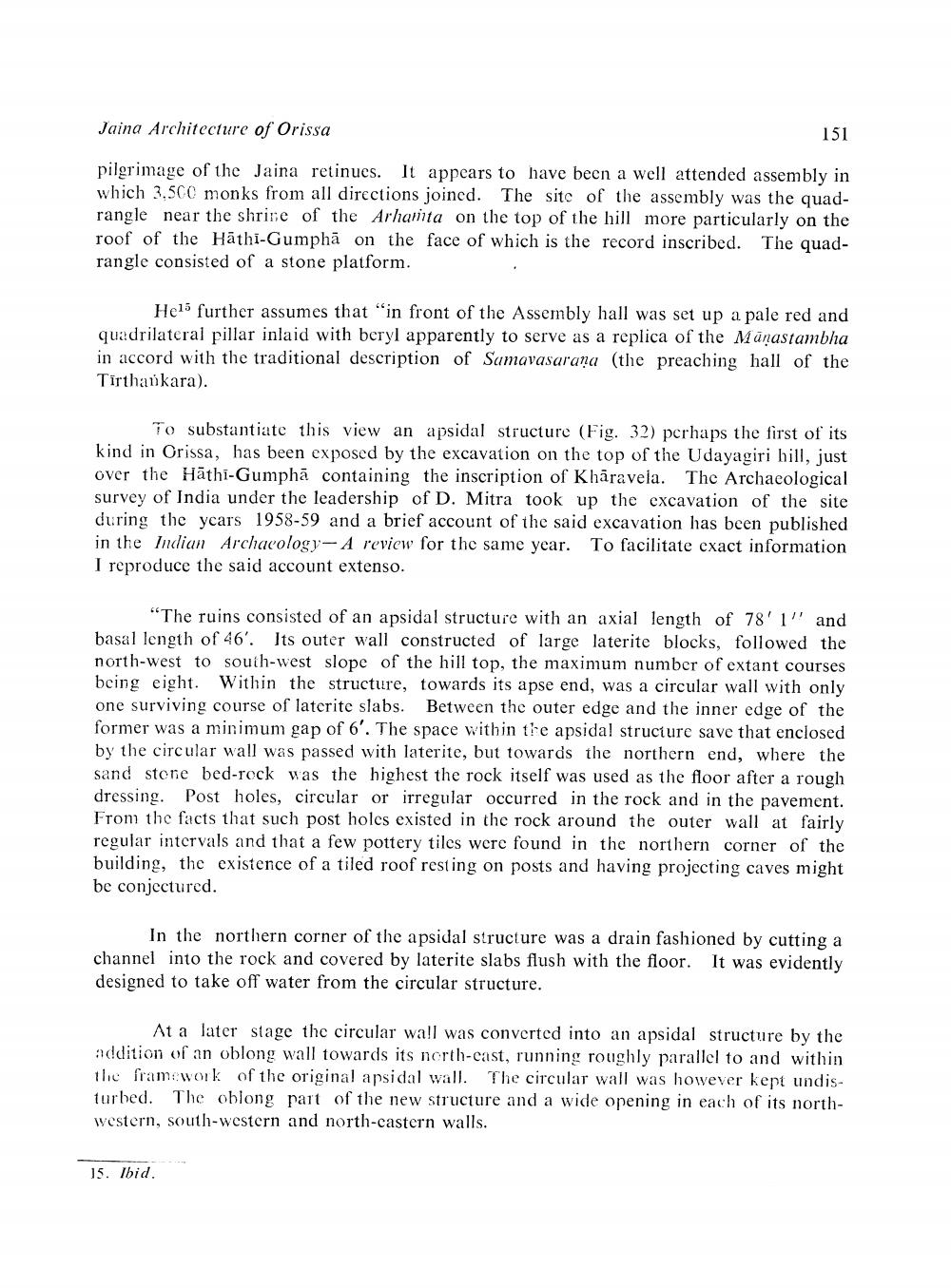________________
Jaina Architecture of Orissa
151
pilgrimage of the Jaina retinues. It appears to have been a well attended assembly in which 3.500 monks from all directions joined. The site of the assembly was the quadrangle near the shrine of the Arhanta on the top of the hill more particularly on the roof of the Hathi-Gumphā on the face of which is the record inscribed. The quadrangle consisted of a stone platform.
Hels further assumes that "in front of the Assembly hall was set up a pale red and quadrilateral pillar inlaid with beryl apparently to serve as a replica of the Mānastambha in accord with the traditional description of Sumavasarana (the preaching hall of the Tirthavkara).
To substantiate this view an apsidal structure (Fig. 32) perhaps the first of its kind in Orissa, has been exposed by the excavation on the top of the Udayagiri hill, just over the Hāthi-Gumphā containing the inscription of Khāravela. The Archaeological survey of India under the leadership of D. Mitra took up the excavation of the site during the years 1958-59 and a brief account of the said excavation has been published in the Indian Archacology- A review for the same year. To facilitate exact information I reproduce the said account extenso.
"The ruins consisted of an apsidal structure with an axial length of 78' 1'' and basal length of 46'. Its outer wall constructed of large laterite blocks, followed the north-west to south-west slope of the hill top, the maximum number of extant courses being eight. Within the structure, towards its apse end, was a circular wall with only one surviving course of laterite slabs. Between the outer edge and the inner edge of the former was a minimum gap of 6'. The space within the apsidal structure save that enclosed by the circular wall was passed with laterite, but towards the northern end, where the sand stone bed-rock was the highest the rock itself was used as the floor after a rough dressing. Post holes, circular or irregular occurred in the rock and in the pavement. From the facts that such post holes existed in the rock around the outer wall at fairly regular intervals and that a few pottery tiles were found in the northern corner of the building, the existence of a tiled roof resting on posts and having projecting caves might be conjectured.
In the northern corner of the apsidal structure was a drain fashioned by cutting a channel into the rock and covered by laterite slabs flush with the floor. It was evidently designed to take off water from the circular structure.
At a later stage the circular wall was converted into an apsidal structure by the addition of an oblong wall towards its north-east, running roughly parallel to and within the framework of the original apsidal wall. The circular wall was however kept undisturbed. The oblong part of the new structure and a wide opening in each of its northwestern, south-western and north-castern walls.
15. Ibid.




